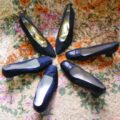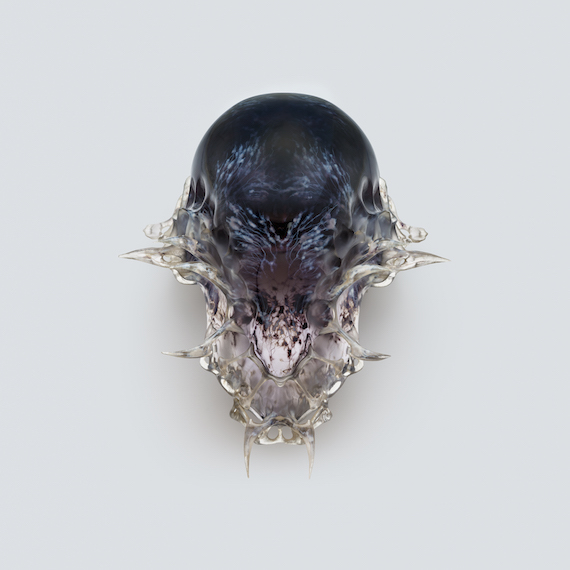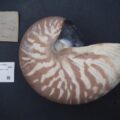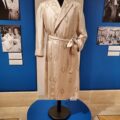Missoni Art Colour at the Fashion and Textile Museum
July 23, 2016Think of Missoni Art Colour at the Fashion and Textile Museum as two interesting exhibitions and it will be less confusing; as an attempt to cite Ottavio Missoni among the geniuses of Italian mid-century abstract and conceptual art it doesn’t quite work.
I love the colours and playful zig zags of Italian brand Missoni, plus its flowing shapes and hippy-luxe vibe, so I was excited to see more about the history of the company and take in some stunning ensembles over the years.
The premise of the exhibition is an overview of the Missoni fashion brand’s work, with an emphasis on one half of the original design duo, co-founder Ottavio Missoni, and examples of original artworks (lent by the Ma*ga Art Museum as well s various private collections) from the art movements which inspired him.
Some of Missoni’s own canvases are hung alongside those of Sonia Delaunay, Lucio Fontana and Gino Severini, as if insinuating that his work fits nicely there. In the obligatory accompanying documentary his wife, co-founder Rosita Missoni, smiles fondly and announces “He could have been anything, athlete, artist…” Yes, and so could anyone. But I see no evidence that Ottavio is truly a renaissance man. His paintings seem no more than competent, though without a larger selection it’s hard to see what he was trying to achieve and his bright geometric abstracts may have simply been copying the trends without an underlying manifesto. The quilts meanwhile, made from leftover sample scraps of knitting from his factory’s machines, are not striking.
Missoni – An excellent colourist
The decision to push the exhibition in this direction is a shame on two counts: a more straightforward chronological history of the company’s designs and growth would have been both welcome and informative, and the emphasis on Ottavio leaves Rosita out of the picture almost entirely, but for the role of adoring wife. As well as this, Ottavio really was an inventive colourist, and to try and push the idea that he was also an artist actually detracts from celebrating his skills in this.
From the beginning of the company Ottavio, who died in 2013, was the colourist and invented the patterns, whilst Rosita created the shape of the garments: the little triangle Missoni bikinis, the flowing maxi dresses and the flares that are the house’s hallmark, always in knitted fabrics.
Elegant Mannequins
The main hall of the exhibition displays a towering bank of elegant mannequins, with an accompanying sound art work by Pietro Pirelli, “SinfoniaTessile” (Textile Symphony), a sometimes dissonant composition which utilises the noises of the Missoni factory machines. The lighting, although not an installation in itself also changes from dim to quite bright, which is a little irritating if you are trying to concentrate on a particular mannequin rather than the overall effect.
The mannequins show forty-two looks from the brand’s history from its inception in 1953 up until 2014. I was disappointed to find no guide or information about which look was from which year, as each was unlabelled (I feel I must have missed it, as this information seems vital to me), and there wasn’t even the vague guide of a chronological order to see how the look evolved and the brand reacted to changing fashions, if indeed it did. The show has transferred from Italy, and I can see that there the looks were arranged by colour, which makes some sense, but I’m not sure what the principle for the arrangement was in London.
Signature fine knit
I think I identified some 1960s hot pants, 1970s flares, and 1980s jumpers, but it was hard to say as Rosita and her designers clearly like certain shapes, which tend to be constrained by the drape of the fine knit which is the Missoni signature. And why not, after all the most successful looks are a kind of 1970s hippy-luxe vibe, which, while you can’t exactly say “never dates”, certainly always looks good if that’s your thing.
In amongst there was just one look that stood out, a pretty knitted suit in blue and red tartan, which with its structure looked out-of-place, as if designed by someone else. Otherwise, there was a riot of stripes and zigzags, and zig zags in stripes, as well occasional florals and some interesting fabric experiments, which caused pocket-like textures and folds, Issey Miyake style. These riots of colours are sometimes layered pattern-on-pattern within a look, and sometimes with carefully matched block colours, but always judiciously planned and less chaotically than they would seem at first glance: for example a blue polo-necked mini-dress with subtle purple tonal stripe at the hem is worn with a matching blue loose cardigan coat, but totally contrasting red, pink and orange tights and a red knit cap that matches the tights.
The most stylish Italian women like their clothing to be elegant and quite matchy-matchy, although they are not conservative with colour, and these designs really hit that mark. Although they are all made of knitted fabric, over the years the company has experimented with different yarns and textures, so there are some quite chunky wools, silks, fine polyester and cottons in there, and whilst most of the designs are created within the fabric itself, some, such as the floral ones, are over printed.
Unusual Colour Combinations
Of the design process, in the accompanying documentary video Ottavio explains three key points: one, that colour-wise, he considers that purple looks good with everything. Two, he is colour-blind. Three, that although they are famous for stripes, in the beginning, stripes were all the machines could do. I have noticed before that colour-blind people often choose colours which others might consider jarring or “off”, and many become famous for their unusual colour combinations.
Beautiful interiors at Missoni Art Colour
This obligatory documentary video is not especially informative but it is situated in a beautiful room. I have a feeling that the Italian site of the show, MA*GA where the exhibition was shown last year had much larger rooms, as the equivalent installation was much more spacious with loftier ceilings, but no matter, cramming all the specially created mirrors, which are each framed with a different Missoni fabric and treated with a different technique, some glazed with colour or scumbled with antiquing effect to darken them, and overlapping the beautiful coloured carpets, when added to the bean bags dotted around makes the screening room pretty cosy. On one of the hottest days of the year I was happy to relax in the dim room and let it soothe me.
Art film
The rest of the exhibition is formed of display cases showing colour ideas and knitted samples. On your way in, or probably better, out, don’t walk past the discreet screening room on the ground floor showing a three screen work filmed at the Missoni factories in 2015 by the artist Ali Kazma, “Casa Di Moda”. Each screen shows a different film loop of four minutes or so, and the soundtracks, which are in the main repetitive machine noises with the occasional babble of voices, interact harmoniously.
Missoni History
The Missoni company was set up in 1953 by Ottavio and Rosita Missoni who had married in that year. Ottavio had previously had clothing ventures when he designed and made knitted tracksuits for the Italian team in 1948’s Olympic Games, in which he participated as an athlete, but Rosita had a family background in textile manufacturing as her parents owned a shawl making factory. Contributing her expertise, the business was launched in earnest, in the couple’s basement.
In 1958 the brand started to find its direction and decided to become a high fashion label, initially showing a small fashion collection entitled “Milano-Simpathy” (sic) in a department store. It wasn’t until 1966, however, that the full Missoni look was achieved, breaking away from traditional knitwear designs to into unusual layers and draped shapes. The collection was shown on the catwalk in Milan and the press thoroughly approved. By 1969 the Missoni name was made when famed and very influential editor of American Vogue, Diana Vreeland, saw the collection and exclaimed “who said there are only seven colours in the rainbow? There are tones!” She then set up a number of meetings with buyers from American department stores, and an expansion into larger factories commences.
Family Business
Missoni has remained a family business, with the couple’s daughter Angela designing the catwalk collection and their son, Luca, overseeing the archive. He was also involved in curating this show, and has been energetic in producing many others to promote the heritage of Missoni to the world. Rosita Missoni, who is now 84, still oversees the interior design arm of the huge business, which includes hotels, accessories and childrens wear.











